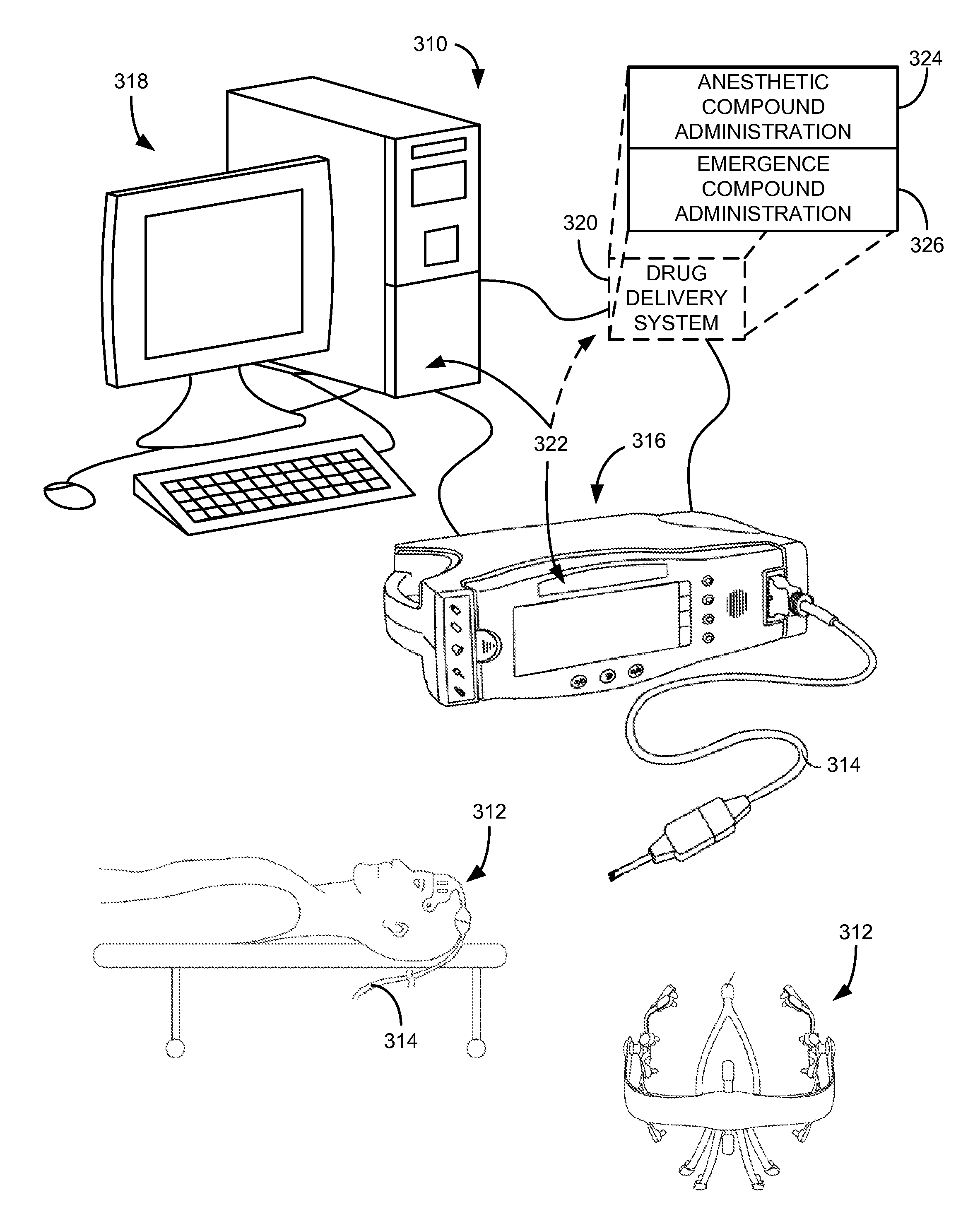System and method for monitoring anesthesia and sedation using measures of brain coherence and synchrony
a technology of coherence and synchrony, applied in the field of systems and methods for monitoring and controlling the state of a patient, can solve the problems of incomplete understanding of the effects of anesthesia on patients and the operation of the patient's brain over the continuum of “levels” of anesthesia, and achieve the effect of improving the patient's cognitive function and improving the patient's overall health
- Summary
- Abstract
- Description
- Claims
- Application Information
AI Technical Summary
Benefits of technology
Problems solved by technology
Method used
Image
Examples
example i
[0092]General anesthesia, a drug-induced reversible coma, is commonly initiated by administering a large dose of a fast-acting drug, such as propofol, to induce unconsciousness within seconds. This state that may be maintained as long as needed to execute surgical and many nonsurgical procedures. Although much is known about molecular actions of anesthetics, it is not clear how these effects at molecular targets affect single neurons and larger-scale neural circuits to produce unconsciousness.
[0093]The macroscopic dynamics of anesthetics are noticeable in EEGs, which contain several stereotyped features. For example, when patients are awake, corresponding spectrograms show strong occipital so-called a activity, while after loss of consciousness using propofol, the spectrograms show loss of a activity and increased δ activity in the occipital sites, with strong α and δ activity in the frontal sites. Increased power in frontal sites over the α (8-14 Hz), β (12-30 Hz), and δ (1-4 Hz) r...
example ii
[0128]Although some EEG patterns are observed consistently during certain procedures, it is unclear how they are functionally related to unconsciousness. Specifically, other anesthetic drugs, such as ketamine and dexmedetomidine, operate through molecular and neural circuit mechanisms that may be different from those of propofol. For example, similar EEG patterns are known to arise for different drugs, such as with propofol, an γ-Aminobutyric acid receptor-specific agonist (GABAA), and dexmedetomidin, an α2-adrenoceptor agonist. Propofol is associated with well-coordinated frontal thalamocortical alpha oscillations and asynchronous slow oscillations. Similarly, dexmedetomidine gives rise to spindle-like activity detected in the 8-12 Hz range over the frontal region and slow oscillations. As such, although EEG patterns observed during administration appear superficially similar, different behavioral or clinical properties may be exhibited. For example, unlike patients receiving propo...
PUM
 Login to View More
Login to View More Abstract
Description
Claims
Application Information
 Login to View More
Login to View More - R&D
- Intellectual Property
- Life Sciences
- Materials
- Tech Scout
- Unparalleled Data Quality
- Higher Quality Content
- 60% Fewer Hallucinations
Browse by: Latest US Patents, China's latest patents, Technical Efficacy Thesaurus, Application Domain, Technology Topic, Popular Technical Reports.
© 2025 PatSnap. All rights reserved.Legal|Privacy policy|Modern Slavery Act Transparency Statement|Sitemap|About US| Contact US: help@patsnap.com



